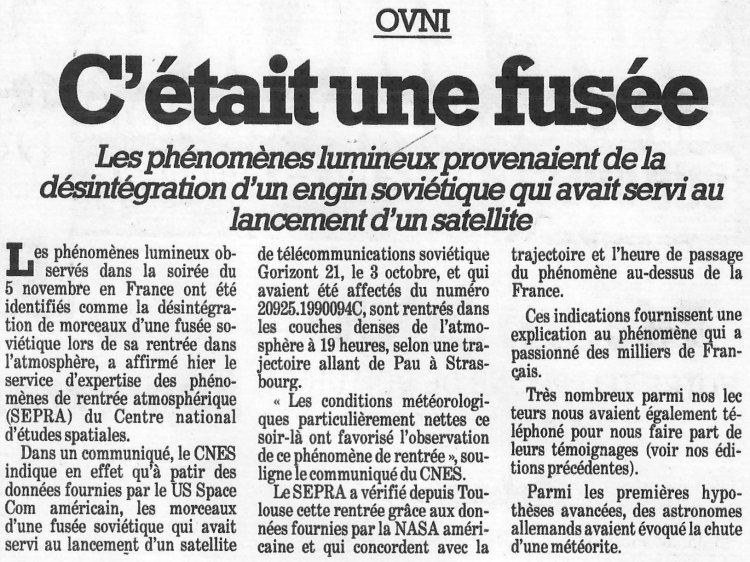The article below was published in the daily newspaper Sud Ouest, France, on November 10, 1990.
(This is about the observations of November 5, 1990 at about 7 p.m.; of what were re-entry of a Russian rocket debris.)

|
The luminous phenomena came from the disintegration of a Soviet craft that had been used to launch a satellite
The luminous phenomena observed in the evening of November 5 in France were identified as the disintegration of parts of a Soviet rocket during its re-entry into the atmosphere, said the service of expertise of atmospheric reentry phenomena (SEPRA), National Center for Space Studies, yesterday.
In a statement, CNES indicates that from the data provided by the US Space Com, the parts of a Soviet rocket that had been used to launch a Soviet telecommunications satellite Gorizont 21, on October 3, and which had been assigned the number 20925.1990094C, returned to the dense layers of the atmosphere at 7 p.m., following a trajectory from Pau to Strasbourg.
"The particularly sharp weather conditions that evening have encouraged the observation of this phenomenon of re-entry," CNES said.
The SEPRA verified since Toulouse this return thanks to data provided by the American NASA and consistent with the trajectory and time of passage of the phenomenon over France.
These indications provide an explanation for the phenomenon that has fascinated thousands of French people.
Many of our readers had also phoned us to share their stories (see our previous issues).
Among the first hypotheses advanced, German astronomers had evoked the fall of a meteorite.